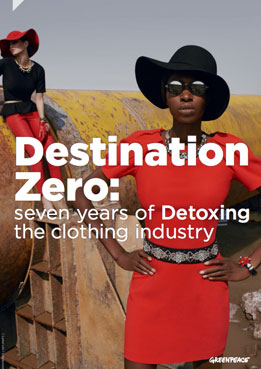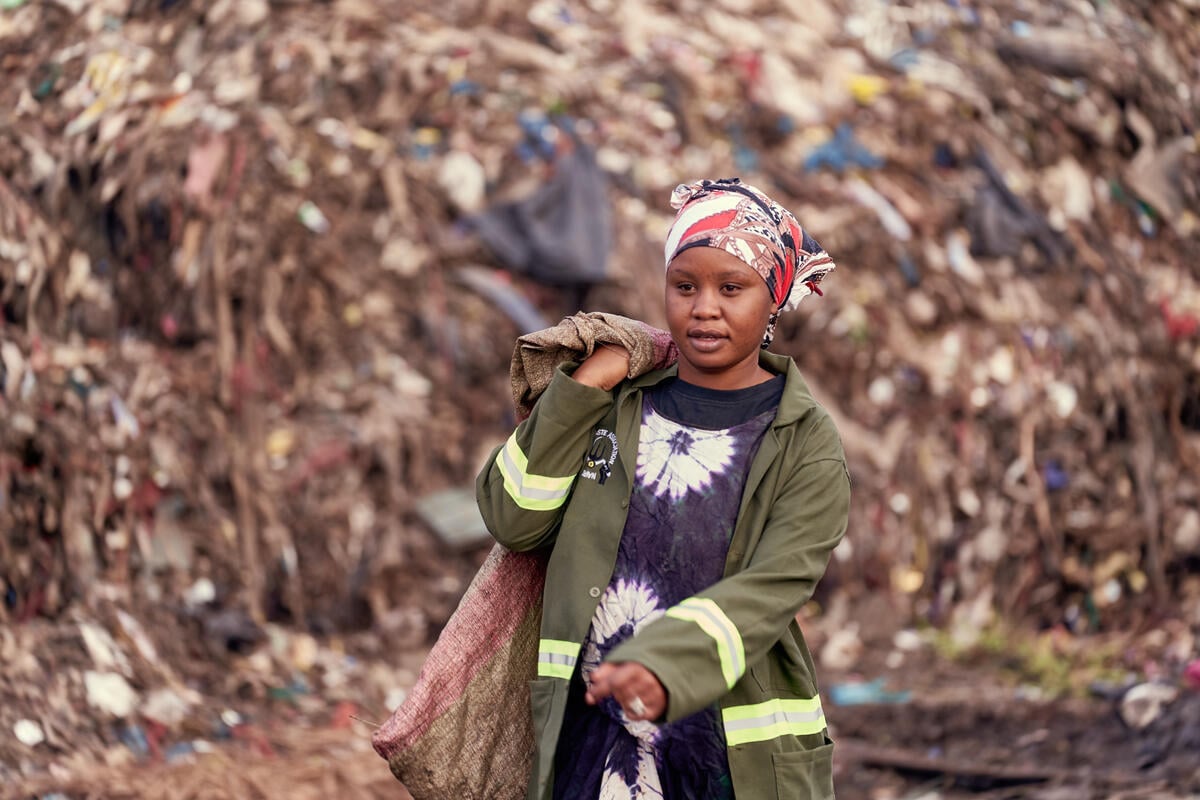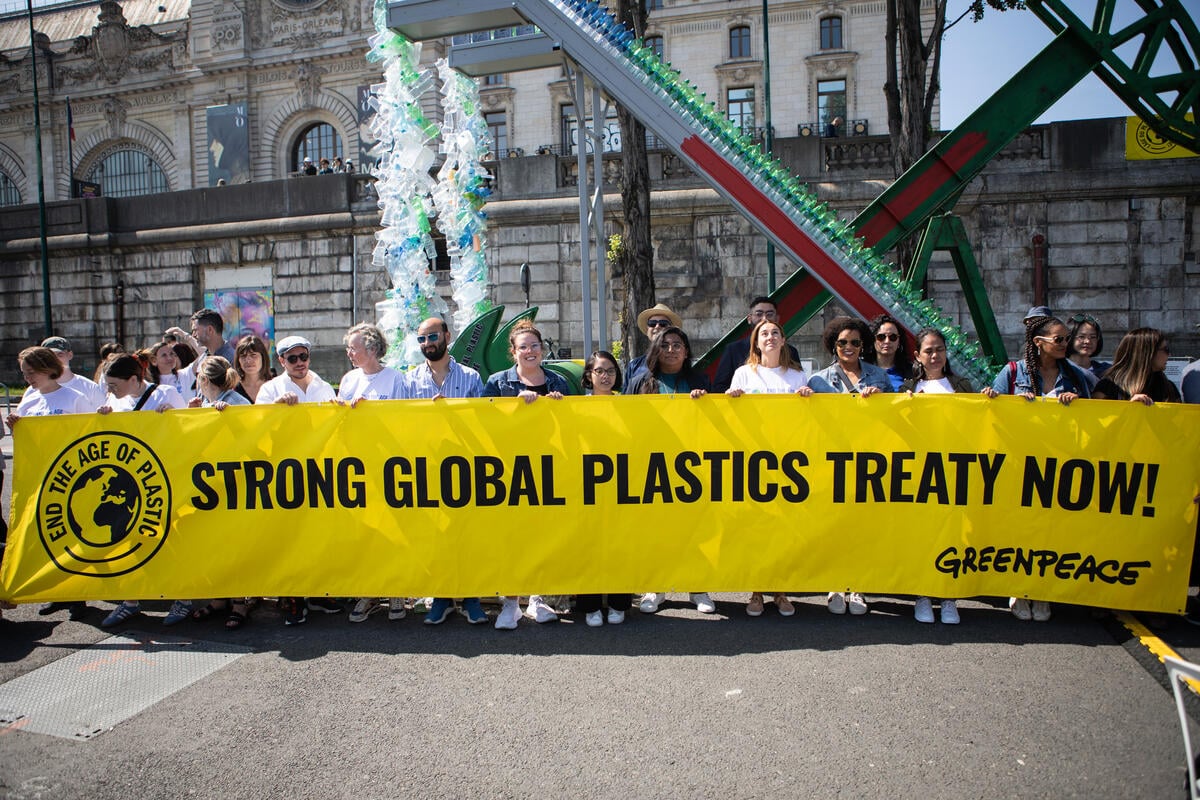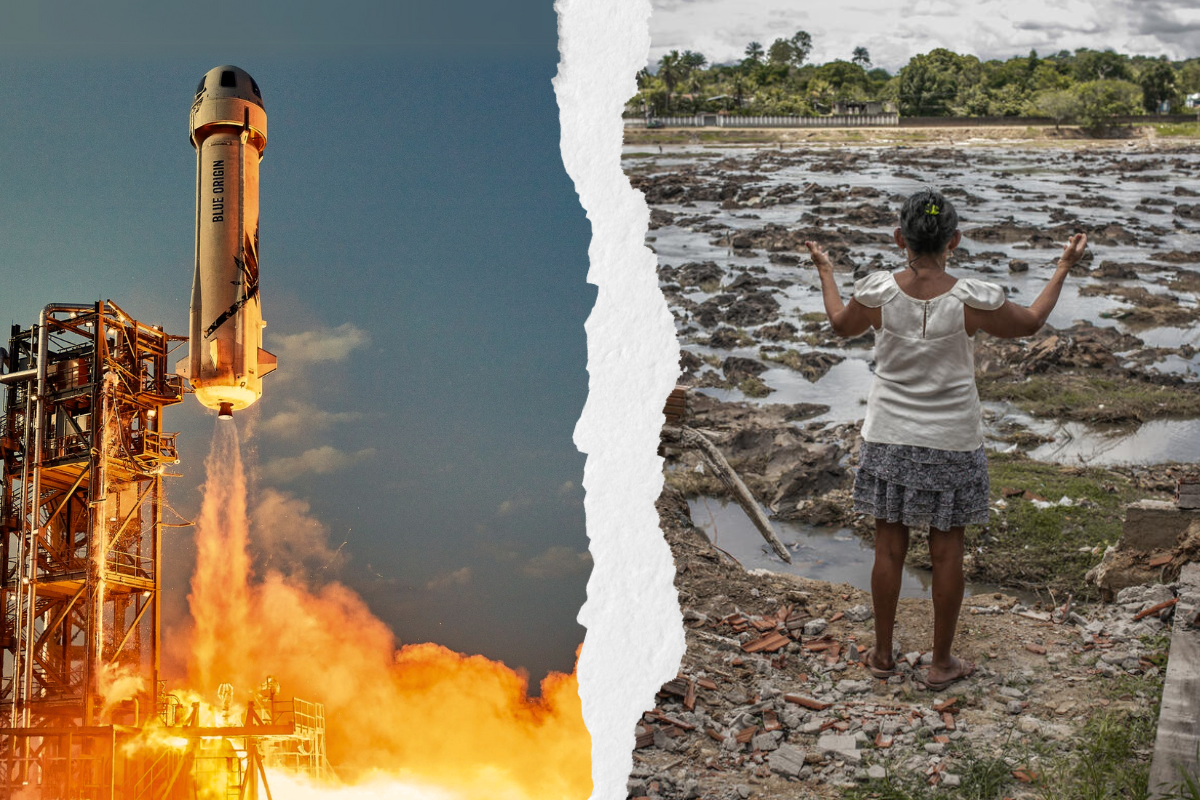A new Greenpeace Germany report shows the progress of global clothing brands and suppliers in detoxing from hazardous chemicals, as well as identifying future challenges for all stakeholders.

Seven years after Greenpeace started the Detox My Fashion campaign, asking fashion companies to stop polluting waterways with hazardous chemicals from clothing production, all 80 companies that took the pledge to phase out these chemicals from their production-line by 2020 have achieved significant progress.
For the first time maps the major steps all companies have made together across all sectors, including fashion, sportswear and luxury retailers, outdoor brands and suppliers. Together, these companies represent 15 % of global clothing production.
The report addresses major joint challenges and maps out next steps to achieve a hazardous-free future for fashion.
Download the report:
- Destination Zero – Seven Years of Detoxing the Clothing Industry
- Destination Zero – Annexes: this document includes further details on Figure 1, the elements of Detox (Annex 1), and reproduces the responses from all of the Detox Committed brands and companies to Greenpeace’s survey about their progress on the hazardous chemicals aspect of their commitment (Annex 2).



